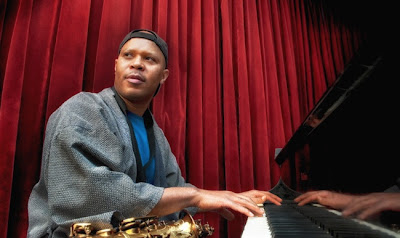
The album Painted Lady has a confusing history. The inside of the CD’s sleeve says that it was recorded in 1987 while other sources online tell you it was 1980. Release dates are scattered all over, including 1995, 2008 and 2011, but only if you search hard enough. The record label responsible, ITM, doesn’t seem to exist anymore and no one gets any writing credit for the songs. The album is supposed to be a collaboration between vocalist and activist Abbey Lincoln and maverick saxophonist Archie Shepp, but Shepp doesn’t seem to be too eager to make himself heard. If anything, Roy Burrowes on muted trumpet gets more chances to shine in lead figures and intermittent flourishes. Known for throwing down multiple gauntlets in his gigantic career, Shepp never once lets himself fly off the handle and get crazy. There is an unnatural amount of restraint going on here, and it’s just one of the many reasons why Painted Lady is more of a question mark than a definitive statement in the careers of Shepp or the late Lincoln. Still, a good question mark is better than nothing.
Painted Lady is a good times jam session that runs a few reliable standbys out the studio doors in time for the next client to set up shop. The song “Golden Lady” doesn’t even get another take after Lincoln observes, roughly halfway through, that it “feels like it’s just a little bit slow”. Her microphone constantly picks up her let’s-pick-up-the-pace-you-guys handclaps, giving the recording sessions more of a rehearsal tone. This isn’t altogether bad, especially when you like your music to be rough around the edges, and “Golden Lady”, despite its tempo shifts, sounds really good.
Come to think of it, Abbey Lincoln sounds perfect. Even if she was long past the big 5-0 at the time of these recordings, her voice has no rasp, no nasally treble, no labored low end, and no distracting flights of fancy. It’s a good thing that she’s so good because she is the focal point of the album. Like I said before, Archie Shepp sounds like he just mainly walked in with some charts and played when he felt like it. The rhythm section of Jack Gregg and Freddie Waits keeps time while Hilton Ruiz turns in a serviceable piano performance. Yep, they’re pretty much a backing band. Abbey is in charge.
One strange thing worth mentioning is the overdubbed vocals on “Painted Lady on the Stage”. This is one moment where the album crosses over into a form of bop pop yielding a catchy refrain, which could explain why the recording crew thought it was safe to do the following: have two Abbey Lincolns sing the same lyrics in two entirely different ways simultaneous. One of two things are going on here, either the engineers and producers thought this would kick the song up a notch just before it bringing it on home or Lincoln got bored with the song and wanted to just do something different before it wrapped up. In either case, it sounds like she couldn’t hear the first take while singing the other. No meshing takes place. It just sounds messy. Why was this done to an otherwise snappy tune?
You can’t answer this question when you really don’t understand an album’s back story. Sure, Painted Lady is a fine album. But in this day and age, where every single question you have is easily answered by the Internet, the obscurity of the album and its dropping-from-the-sky re-release is just kind of weird. But you all know that Duke Ellington wrote “Sophisticated Lady”, right? So, you’re all good. (popmatters.com)
1 Sophisticated Lady 7:45
2 Golden Lady 9:30
3 Painted Lady On The Stage 5:15
4 Throw It Away 6:35
5 What Are You Doing The Rest Of Your Life 9:30
6 Caged Bird 6:15
Abbey Lincoln: Vocals
Archie Shepp: Sax (Soprano, Tenor)
Frederick Waits: Drums
Roy Burrowes: Trumpet
Jack Gregg: Bass
Hilton Ruiz: Piano

info |
http://www.artistdirect.com/nad/store/artist/album/0,,120886,00.html
http://www.discogs.com/Abbey-Lincoln-Archie-Shepp-Painted-Lady/release/2400995
http://www.archieshepp.net/manage_content.php?cat_id=2&item_id=75&view_type=1











